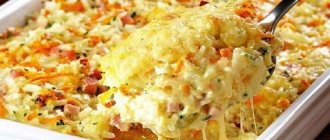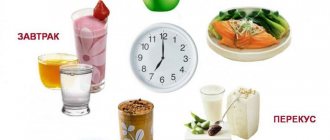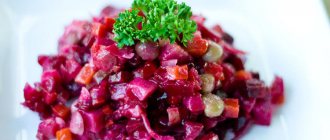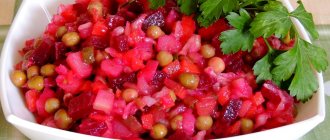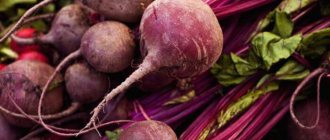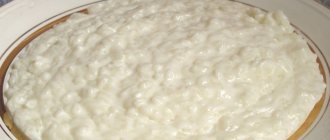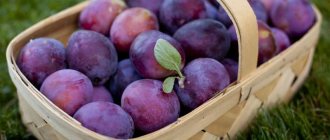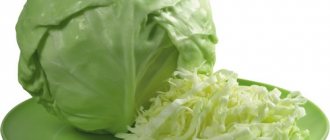Nuts are of great value for human health, because they contain many useful elements. But they must be used with special care, especially if a person suffers from pancreatitis.
This pathology of the pancreas appears as a result of metabolic disorders in the body. Most often, this is caused by spicy and fatty foods, alcohol abuse, a sedentary lifestyle, and in some cases the cause may be an infection. Many patients are interested in the question, is it possible to eat nuts with pancreatitis?
Principles of nutrition for pancreatitis
Pancreatitis is a disease that strikes a person suddenly. Very often it becomes chronic. Doctors always recommend that patients with this diagnosis follow the “Table No. 5” diet. During periods of exacerbation, the menu becomes more strict.
Can you eat nuts if you have pancreatitis? To answer this question, you need to understand the nutritional principles that should be followed in case of inflammation of the pancreas:
- the main menu should be protein;
- the fat content in food should be reduced;
- you cannot eat fried or smoked foods;
- It is not recommended to eat salty and pickled foods;
- you need to eat often, at least 5 times a day;
- the amount of food for one meal should be small, overeating is unacceptable;
- during periods of exacerbation, dishes should be pureed;
- must be chewed thoroughly;
- food should be warm;
- You should not wash down your meals;
- It is recommended to steam or bake foods.
Any meal with pancreatitis must meet the criteria listed above. Even in the remission stage, it is necessary to give up fatty foods. To reduce the number of relapses, you must constantly adhere to the principles of proper nutrition.
Authorized Products
With pancreatic disease, the diet remains quite varied. The main requirement is that the products should not provoke discomfort and burden the diseased organ. List of permitted products:
- dried bread;
- sweet apples;
- dried fruits compote;
- jelly;
- boiled vegetables;
- vegetable broth soups;
- meat dishes from chicken, turkey, rabbit, beef;
- low-fat fish;
- dairy products;
- porridge with water or milk;
- chicken protein;
- in the remission stage, nuts are allowed for pancreatitis;
- vegetable oil.
Prohibited Products
Foods that are prohibited in the acute stage of pancreatitis are not recommended to be eaten during the period of remission. Sometimes you can allow yourself some kind of delicacy, but you must remember that there is a risk of harm to the body.
List of prohibited foods for pancreatitis:
- alcohol in any quantity;
- fresh bread, buns;
- coffee and cocoa;
- carbonated drinks;
- fatty meat soups;
- lard, pork, duck, lamb;
- grapes, dates, bananas;
- mushrooms;
- all legumes;
- spicy seasonings;
- onion, garlic, radish, radish;
- fried foods;
- marinades, canned food;
- sausage, ham;
- fatty fish;
- boiled yolk;
- fast food.
Benefits of nuts
Nuts for pancreatitis can be consumed in small quantities both during remission and during exacerbation. There are many types, so everyone will find a tasty and healthy treat to their liking. It should be remembered that nuts are a high-calorie product and contain 500-600 kcal per 100 g. However, their benefits cannot be overestimated.
All nuts contain vitamins A, B and E. As well as minerals: iron, potassium, copper, magnesium, selenium, calcium. Nuts are a fatty product, so they must be consumed with caution. For better absorption, it is recommended to soak them before eating for 8 hours in cool water.
Beneficial properties of nuts:
- strengthens the immune system;
- improve the condition of skin, hair, nails;
- relieve insomnia;
- calm the nervous system;
- improve brain activity;
- used to prevent heart disease;
- increase bile secretion;
- increase the elasticity of blood vessels;
- reduce blood cholesterol levels;
- promote the elimination of toxins;
- are natural aphrodisiacs;
Daily consumption of nuts in small quantities reduces the risk of developing diabetes by 27%, improves the functioning of the cardiovascular system by 35%, and helps reduce cholesterol levels by 5%.
Product dosage and features of introduction into the diet
Nuts
Start eating nuts with one or two peeled kernels per day. Gradually, the daily dose is increased to 15-20 grams per day.
You can eat pine nuts no more than twice a week. However, it is best to grind them before use. The kernels can also be used to decorate confectionery products.
Oil
Cedar oil is prohibited for pancreatitis in the acute phase. Upon the onset of stable remission, but not earlier than a year after acute attacks of the disease have stopped, it is allowed to gradually introduce the product into the diet.
You should start with half a teaspoon per day. After a week, provided the body reacts positively, you can try a full teaspoon of the product. The maximum daily intake of cedar oil for chronic pancreatitis is two teaspoons per day, divided into two approaches. This product is allowed to be consumed no more than three times a week.
Harm from nuts
Like any other product, eating nuts for pancreatitis has its downsides. Nuts are not recommended for overweight people due to their high calorie content. Abuse can cause an allergic reaction that did not exist before.
Contraindications:
- children under 5 years of age;
- obesity;
- previous allergic reactions;
- individual intolerance.
People with skin diseases should avoid eating nuts in large quantities. The tyramine they contain can cause headaches.
When purchasing, you need to pay attention to the appearance of the treat. If there is mold on the nuts or they have a rancid smell, they should not be eaten. Unripe almonds contain cyanides, which have a negative effect on the human body.
Nuts are quite a heavy food. People with diseases of the liver, pancreas, and gastrointestinal tract should consume them in limited quantities, as they burden the digestive system.
Negative properties
Pine nuts have almost no contraindications for consumption. The only caveat is the abundance of fats in the composition and a powerful choleretic effect. Therefore, if you eat them in large quantities, the excess calories will cause rapid weight gain. For this reason, pine nuts are harmful in acute pancreatitis.
Allergies from eating pine nuts are very rare. Allergic reactions may have the following manifestations:
- skin rash;
- burning;
- redness;
- skin itching;
- stomach and intestinal disorders.
If consumed in too large quantities, irritation of the intestinal walls and stool upset are possible, since this product contains a lot of fiber. Choosing a quality product is important. Eating old and moldy nuts can result in severe poisoning.
What nuts can you
Nuts are a healthy product, but each variety has its own beneficial and harmful properties. What nuts can you eat for pancreatitis?
Pistachios, cashews and chestnuts are considered optimal in terms of the ratio of fiber and nutrients. Walnuts are higher in fat, so their consumption should be limited. Pine nuts and hazelnuts have less fat and low fiber. Therefore, they can be used during remission, but not daily.
Pine nuts also help fight pancreatitis. They increase the body's defenses and suppress inflammatory processes. For better absorption, pine nuts are peeled and fried in a frying pan without oil. The taste of nuts becomes delicate.
Chestnut cannot be eaten raw; this plant must be boiled. For pancreatitis, chestnuts are added to salads and main courses. This allows you to improve the taste of the dish and at the same time saturate the body with useful substances. Old chestnuts can cause poisoning, so when purchasing, you should check that there are no rotten or unsightly kernels.
Vitamin composition of cedar pine seeds
The product is rich in vitamin complexes and beneficial biologically active substances. Pine nuts are rich in:
- vitamin complexes B, C, E, K, PP;
- saturated fatty acids;
- amino acids;
- potassium, magnesium, phosphorus, calcium, sodium, iron, copper, zinc, manganese, iodine.
Nut kernels are saturated with fats and fatty acids necessary for the body, including Omega 3, Omega 6, Omega 9. They make up almost 70% of the product. In addition, the kernels are enriched with vegetable protein (13.7%). In terms of protein, nuts are even ahead of chicken meat. At the same time, plant protein is absorbed by the body much easier and better than animal protein.
Calorie content
Due to the abundance of fats, the calorie content of 100 grams of product reaches 673 kcal.
Walnuts
The greatest amount of controversy is caused by the use of walnuts for pancreatitis. The benefits of this plant are enormous. Based on them, medicines are created that strengthen the immune system, destroy harmful microorganisms and saturate them with nutrients. Walnut kernels reduce blood cholesterol levels and strengthen blood vessels. Improves the functioning of the heart muscle and is a powerful antioxidant.
Abuse of walnuts for pancreatitis can have a negative effect on the pancreas due to the large amount of vegetable fats, which:
- increase inflammation of the gland;
- cause nausea;
- interfere with the digestion of food;
- provoke bloating;
- accelerate the production of gastrointestinal enzymes.
Walnut kernels should be added to the diet during remission of the disease. During an exacerbation, it is better to exclude this product. When introducing nuts to the menu in the first days, it is recommended to eat no more than 2-3 pieces, gradually increasing to a handful per day. If after taking unpleasant or painful sensations in the abdomen, they should be excluded. The maximum daily dose is 30 g. in a day.
Medicinal properties of pine nuts
Due to such a rich, valuable composition, cedar nuts have a wide range of useful properties:
- Saturate the body with the elements necessary for life.
- Strengthen the immune system.
- Helps normalize the functioning of the thyroid gland.
- Helps relieve inflammatory processes.
- Reduce the intensity of pain.
- Helps strengthen blood vessels and heart muscle, normalizes heart rate.
- They are a powerful antioxidant.
- Strengthen cell membranes, protect them from the destructive effects of irritating factors.
- Helps normalize digestive processes.
- Normalize carbohydrate, energy metabolism, redox reactions.
- They take part in regulating the acid-base balance.
- Maintains water-acid and electrolyte balance.
- Promotes the healing of damaged tissues of the digestive organs.
- Gently stimulate intestinal motility.
- Improves the conduction of nerve impulses.
- Activate brain activity.
- Activate blood circulation, improve blood composition.
- Helps strengthen bone tissue, teeth, and hair.
- They have a beneficial effect on the skin, improve its tone and elasticity.
Therefore, pine nuts are very popular in folk medicine and cosmetology. They are mainly used for the treatment and prevention of ailments of the cardiovascular, digestive, nervous, and reproductive systems, as well as for replenishing the body’s reserves with essential microelements and vitamins.
Rules of use
Is it possible or not to eat nuts for pancreatitis? There is still no consensus on this issue. Most doctors believe that they can be consumed in reasonable quantities. It is recommended to introduce nuts into the diet with caution during an exacerbation period, since due to the high fat content in some varieties, they can harm the functioning of the gastrointestinal tract. When introducing them into the diet, it is important to remember some rules:
- It is necessary to exclude nuts from the diet if they provoke pain and discomfort.
- You can’t eat nuts every day; the recommended amount is 3 times a week. Sometimes you can use it every other day, but not more than 30 g.
- It is better to eat nuts separately from other foods. Do not use sugar, salt or other seasonings.
- Pre-soak the kernels for 8-10 hours for better digestion.
- The best nuts for pancreatitis are hazelnuts, cashews and pine. Walnuts, despite their benefits, should be included in the diet no more than once a week.
- It should be chewed thoroughly.
- It is important to remember that eating large amounts of nuts can trigger an allergic reaction.
- Excess fiber can cause diarrhea.
Types of nuts you can eat
Patients with pancreatitis of all types are interested in: is it possible to eat nuts with pancreatitis of the pancreas, the amount consumed and their types. When following a diet, it is necessary to minimize the intake of carbohydrates and fats into the body, and on the contrary, the amount of protein needs to be increased.
List of nuts recommended for consumption:
- Walnuts.
- Cedar.
- Hazelnut.
- Chestnut.
- Almond.
- Pistachios.
nuts for pancreatitis
It is important to remember that they should enter the body only in raw form (except for chestnuts!), because they are well absorbed and do not cause a negative or allergic reaction to the body.
Walnuts for pancreatitis
Walnut
Walnut kernels have been valued for their healing properties since ancient times. They are rich in iodine and have an antimicrobial effect, have a positive effect on the immune system, and are close in amino acid composition to meat and fish. But will walnuts be useful for pancreatitis, and what is the recommended daily intake:
- They can be used by patients with chronic pancreatitis when the disease is in remission, and the recommended daily dose is 5 pieces. If the chronic course of the disease worsens, consuming walnuts should be stopped immediately.
- In case of a reactive course of the disease, walnuts will be an ideal addition to the diet of a recovering patient. But it is important to remember that walnuts are a high-calorie product and should only be consumed as a small snack in the amount of 5-7 pieces.
- In acute cases of the disease, the use of walnuts is strictly prohibited, because the dietary fiber contained in them worsens diarrhea and increases pain in the pancreas. And vegetable fats provoke self-digestion of gland enzymes, supporting the inflammatory process.
Pine nuts
pine nut
Pine nuts for pancreatitis have a beneficial effect on the activity of the pancreas. These nuts include the following minerals and vitamins:
- Vitamins B1-B9.
- Vitamin E.
- Copper.
- Manganese.
- Phosphorus.
The consumption of pine nuts in the diet of patients with acute and severe pancreatitis, as well as frequent attacks of the disease, is strictly prohibited. But during the postoperative recovery period, pine nuts have an anti-inflammatory effect on the pancreas. These nuts also have an analgesic effect.
It is important to remember: do not self-medicate under any circumstances. Nuts are eaten in certain doses and only on the recommendation of the attending physician. Pancreatitis is a serious disease, and eating more nuts than normal contributes to the deterioration of not only the pancreas, but also the entire digestive tract system.
Hazelnut
hazelnuts for pancreatitis
Hazelnuts are rich in plant fiber, mineral compounds with a record composition of manganese, magnesium, phosphorus and copper. And the vitamin composition is impressive in its diversity: B1, B2, B9, E, C, P9, K. Therefore, when preparing dietary meals, hazelnuts are often present in the patient’s daily diet. But in case of diseases of the pancreas, considerable restrictions are imposed on the consumption of hazelnuts.
When can hazelnuts be consumed:
- After the exacerbation of the disease has stopped, hazelnuts are gradually introduced into the diet in small portions, in crushed form, or better as an addition to curd mass or as part of salads. But only if the patient’s condition remains stable for six months. Raw nuts are strictly prohibited for consumption!
- In case of reactive pancreatitis, it is allowed to eat hazelnuts, but strictly in limited portions. In this form of the disease, hazelnuts have a beneficial effect on the pancreas without further complicating the disease.
When it is prohibited to eat hazelnuts:
In acute pancreatitis, eating hazelnuts can result in the necrosis of part of the organ. Because hazelnuts will turn out to be an additional allergen for the pancreas, which will only worsen swelling and inflammation. And plant fiber causes severe diarrhea in patients.
Pistachios
pistachios
Pistachios are not only tasty and healthy nuts. In dietary nutrition, they are valued for their rich vitamin and mineral composition, as well as for a huge amount of antioxidants that remove toxins from the body and help quickly reduce the inflammatory process. For diseases of the pancreas, the use of these nuts is introduced into the diet, but not for everyone and not always.
In the chronic form, pistachios can be consumed only when the disease is in stable remission for more than six months. You should start adding pistachios back into your diet only in unsalted and crushed form, starting with 1-2 tablespoons 2-3 times a week. During the first week of eating pistachios, carefully monitor your body’s reaction.
unsalted pistachios
In case of a reactive form of the disease, pistachios should also be consumed unsalted. The recommended dose is up to 20 grams per day. With this form of the disease, it is allowed to eat whole kernels. But nutrition is strictly based on the recommendation of the attending physician.
In the acute form, eating pistachios is strictly prohibited, because the patient’s diet in this phase is based on completely low-fat food, which causes an exacerbation of the disease, and also increases nausea, bloating and provokes diarrhea.
Almonds and cashews
Cashews and almonds differ from their counterparts in the lowest content of vegetable fats. They contain large amounts of vitamin E, which is considered the strongest antioxidant for the treatment of pancreatic inflammation. Almonds contain much more vitamin E than cashews. Also, almonds and cashews are rich in omega 3 fatty acids, which suppress allergens that lead to inflammation of the pancreas.
almonds and cashews
Cashews are recommended for use during the rehabilitation period of chronic pancreatitis. They participate in the restoration of the body weakened after an attack of pancreatitis, exerting a beneficial effect on it without overloading the gland. Cashews are often used in dietary nutrition for pancreatitis due to its low-allergenic effects. You need to start eating cashews with small portions of 2-4 pieces. per day, crushed and raw, observing the body's reaction.
Almonds are also included in the rehabilitation menu, but with extreme caution. It is considered a strong allergen and needs to be administered 1-2 times. 3-4 times a day, so as not to provoke a new attack of the disease. If there is no reaction, the portion of almond consumption increases every week. Thanks to this nut, digestion is improved and frequent constipation, which often plagues patients suffering from pancreatic diseases, is prevented.
Peanut
Peanuts are not a member of the nut family; they belong to the legume family. But when preparing a diet, doctors consider it together with nuts. Despite all the benefits that legumes have on the beneficial effects of the pancreas, eating peanuts for this disease is strictly prohibited.
peanut
Peanuts can cause a severe allergic reaction, which worsens the course of the disease, and can provoke a new attack. If the cause of the disease is the deposition of stones in the gall bladder, then introducing peanuts into the diet is strictly prohibited due to the fact that it has a strong choleretic effect. And the high content of vegetable protein and fat in peanuts makes it difficult for the body to digest food. And this can provoke a new attack.
During the acute phase of the disease, consuming even a few things will provoke nausea and increase pain, cause diarrhea and increase the production of bile, which enters the pancreatic ducts and destroys them.
During the reactive phase of the disease, eating peanuts is also contraindicated.
Patient reviews
Patients with chronic pancreatitis have mixed opinions about nuts. For some, the activity of the pancreas increases, which causes digestive upset. For others, their mood and body condition improve.
Peanuts can cause pain in the left side if consumed within the first two months after an exacerbation. Pine nuts, when stored improperly, cause discomfort and abdominal cramps.
According to people's reviews, nuts can be eaten if the period of remission has occurred long enough, but caution should be exercised. You can consume no more than a handful per day. If there is a risk of worsening the condition, then it is better to avoid nuts. In any case, the patient needs to decide for himself whether it is worth eating nuts for pancreatitis or not.
Chestnut
chestnut
Chestnut is rich in carbohydrates and proteins. And 100 grams of product contains only 2-2.5 grams of vegetable fat. Therefore, its introduction into the diet for diseases of the pancreas is especially valuable for the body. Its action has a beneficial effect on the digestive system and the functioning of the pancreas. It has an anti-inflammatory effect, does not cause an allergic reaction and relieves severe pain.
In chronic and reactive cases, chestnuts should only be eaten boiled or baked. Add to various dietary dishes to add flavor. In the chronic form, the product should be administered after 2-3 months of stable condition.
